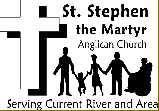Lectionary
Scripture is read in a worship service, and you may wonder what does it mean? It is like hearing a couple pages read from the middle of a novel. You may ask yourself, Who are the characters? What has happened in the plot so far?
If you were hearing a passage from your favourite novel read, you put the reading into context. You know who the characters are; you know what has happened, and what will happen for that matter. You could then think or talk about the portion of the novel that was read. When you hear the Bible read, you have to put the reading into context. As your familiarity with the Bible increases, it becomes easier to put the reading into context.
The scripture readings are from a table called a lectionary that lists the readings for a particular Sunday. This practise dates from the early church. An understanding of how the scripture readings are chosen for the lectionary assists in putting the readings into context.
The Revised Common Lectionary is used after being adopted by General Synod and Diocesan Synod in the mid 1990’s. The lectionary in the Book of Alternative Services (BAS) is the Common Lectionary for Sundays and Holy Days (1980), and the Revised Common Lectionary is in the edition currently being published. These lectionaries are the work of the Consultation on Common Texts, which is an ecumenical group to which the Anglican Church of Canada belongs along with the Roman Catholic, United, Presbyterian, and Lutheran Churches.
Three scripture readings or lessons and a psalm are usually chosen. The Old Testament lesson is from one of the books the Old Testament, the part of the Bible that tells the story of God and the people of Israel, also known as the Jews. The psalms are a book in the Old Testament and were the hymns of the Jews. Epistle means letter, and the Epistles are books of the New Testament which were letters written to various churches. The Gospel reading is from one of four books of the New Testament that are the stories about Jesus.
Most of the Bible is read over the course of three years when this Lectionary is used. Year A always begins on the First Sunday of Advent in those years evenly divisible by three 2022, 2025, etc.
In the Revised Common Lectionary during the seasons of Advent, Christmas, Lent and Easter, the Gospel reading often tells the story of the season, ex. the Christmas story, and the other readings pick up themes from the Gospel. The readings may reflect on a theme of the season, ex. the second coming of Christ in Advent.
During the seasons of After Epiphany and After Pentecost, the scripture is read ‘in course’, that is over several Sundays the Old Testament, Epistle and Gospel readings are selected from a book from the beginning to the end. They are not intended to relate to each other. The Sundays in these seasons are also named Proper 1, Proper 2, etc. Proper 1 is the First Sunday after Epiphany and Proper 34 is the Last Sunday after Pentecost.
The seasons of Lent and Easter may interrupt the reading of a book being read ‘in course’. These seasons move around on the calendar as their date depends on the date of Easter. Easter is the first Sunday following the full moon after the spring equinox.
One of the drawbacks of the Lectionary when the scripture is read ‘in course’ is chapters are skipped. For instance, Proper 18 year B, the Old Testament reading is 2 Samuel 12:15b-24, the death of David’s and Bethsheva’s son. The next Sunday is 2 Samuel 18:1,5,9-15, the death of David’s son Absalom, and the reading of Absalom’s revolt is not read. While the attempt is made to not miss important parts of a story, some parts have been left out.
If you miss worship several Sundays in a row, more pieces of a story are missed, making it more difficult to understand the story. The preacher in the sermon can help people understand the missing pieces of the story and the context of the reading. You could help yourself understand the scripture readings better by reading them at home using the Lectionary.
To further your knowledge of the Bible read the whole Bible cover to cover and attend a Bible study.
The Bible is foundational in our Christian faith. Through it we encounter Jesus. Its teachings are the basis of our doctrine and morals. As we hear it read it in church it becomes the basis of our common life as a church.
See Book of Alternative Services pp. 262-267 for further information.
Note that the verses for the Psalm shown in the lectionary are for the Book of Alternative Services, which differs slightly from the Bible.
See also:


